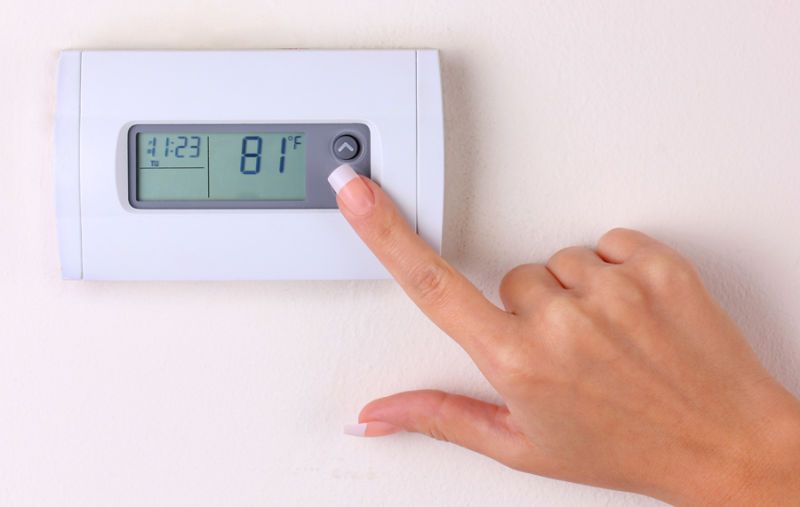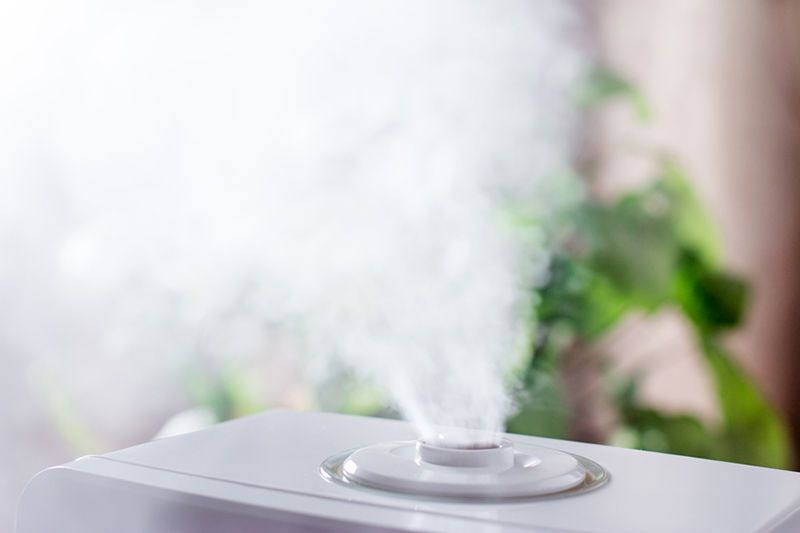How to Set Your Programmable Thermostat
With all the options available for setting your programmable thermostat, it is easy to get confused. Of course, this defeats the purpose of a programmable thermostat––it is designed for you to “set it and forget it,” making your life easier. Naturally, anything can be confusing at times, so feel free to contact our qualified ACS Air Conditioning Services team members with any questions you may have about your programmable thermostat.
Forget About It
With a programmable thermostat in your Tucson home, you are able to program your thermostat once with the changes specified. Quite literally, you can “set it and forget it.”
Changing Temps Really Does Help
Why even bother to set different temperatures on your programmable thermostat?
Because living here in Arizona, it will save you a decent chunk of money. According to the US Department of Energy (DOE), if you turn your heat down 10 to 15 degrees for eight hours, you can achieve a 5 to 15 percent savings on your heating bill.
This goes for your air conditioning as well. Turn your air conditioning down (or the temperature up) when you are out of your house or sleeping, then do the opposite when you are back home or awake.
A Plethora of Programmables
If you are in the purchasing stage of a new programmable thermostat for your Tucson home, know what type of heating, ventilation, and air conditioning (HVAC) equipment you have for compatibility reasons. Also, keep in mind you will need to set a different program for the cooler months than the warmer months.
Here are a few of the main types of programmable thermostats and how they function:
- 7-day programming. This thermostat allows the most flexibility. You can set individual temperatures for each day of the week.
- 5-1-1 programming. This thermostat allows one schedule for the week (five days, Monday through Friday), then a separate schedule for Saturday and then Sunday.
- 5-2 programming. This thermostat is very similar to the 5-1-1 programming type, except Saturday and Sunday are combined into one plan.
- 1-week programming. This thermostat allows you to only set one repeated schedule, the same for every day, regardless of weekdays and weekends.
Programmable Thermostat Dos and Don’ts
Depending on the type of programmable thermostat you have, there will be somewhat different choices. This said, most programmables generally work on the same time options: Wake Time, Sleep Time, Leave Time, and Return Time.
Be sure when programming your thermostat you enter realistic times—accurately reflecting your schedule. You want to get the most from your thermostat.
These are a few things to keep in mind prior to setting your schedule:
- Install name-brand batteries, and change them annually. Cheaper batteries do not have as long of a charge in them. You want your thermostat working when you need it.
- Feel free to temporarily override your set schedule and adjust the temperature when needed. This override automatically cancels and then resumes to normal programming. Do not select Hold/Permanent/Vacation (depending on your thermostat, and unless you are actually going on vacation), and just choose Temporary.
- Avoid cranking temperatures to extremes with the mindset of heating up or cooling down your home quicker. The system does not work that way, and it just uses up your energy faster, costing you more money. Your equipment will heat or cool your home just as quickly when setting it at the accurate temperatures.
In general, here is how to set your thermostat:
1. Be sure to follow your manufacturer’s instructions.
2. Choose either heating or cooling—whichever you will be doing, obviously dependent on the season.
3. Set the temperature for weekdays by setting the switch to heating or cooling and selecting the weekday program. Start with Monday or just weekday, depending on your model, and select the time and temperature for the day(s) you wish.
Continue with the remaining times for that day(s) with temperatures. For example, you may want your air conditioner to cool your home to 72 degrees at 7:00 a.m., so when your alarm goes off at 7:30 a.m., your home is nice and cool for you. Then when you go to bed at 11:00 p.m., you would want to set your air conditioning to 76 degrees at 11:30 p.m. so you are saving energy while asleep.
The same procedure goes for the heating setting. Many thermostat models allow you to set times and temperatures up to four times during weekends. So if you work or leave during the day, you can change the temperature to reflect this and save even more money.
4. Set the temperature for weekends in the same manner. However, since most people tend to be home more during the weekend, you may only want to set the temperature for your wakeup and bed times. You can use a temporary override to adjust the temperature if you decide to leave the house during the day.
Contact ACS Air Conditioning Services for All Your HVAC Needs
Programmable thermostats are really designed for you to “set it and forget it.” A programmable thermostat will help make your Tucson, AZ, home comfortable and may allow you to save money at the same time. Call ACS Air Conditioning Services at 520-230-5668 or request service online if it is time for a new thermostat or if you need help programming yours. We are always happy to help.

